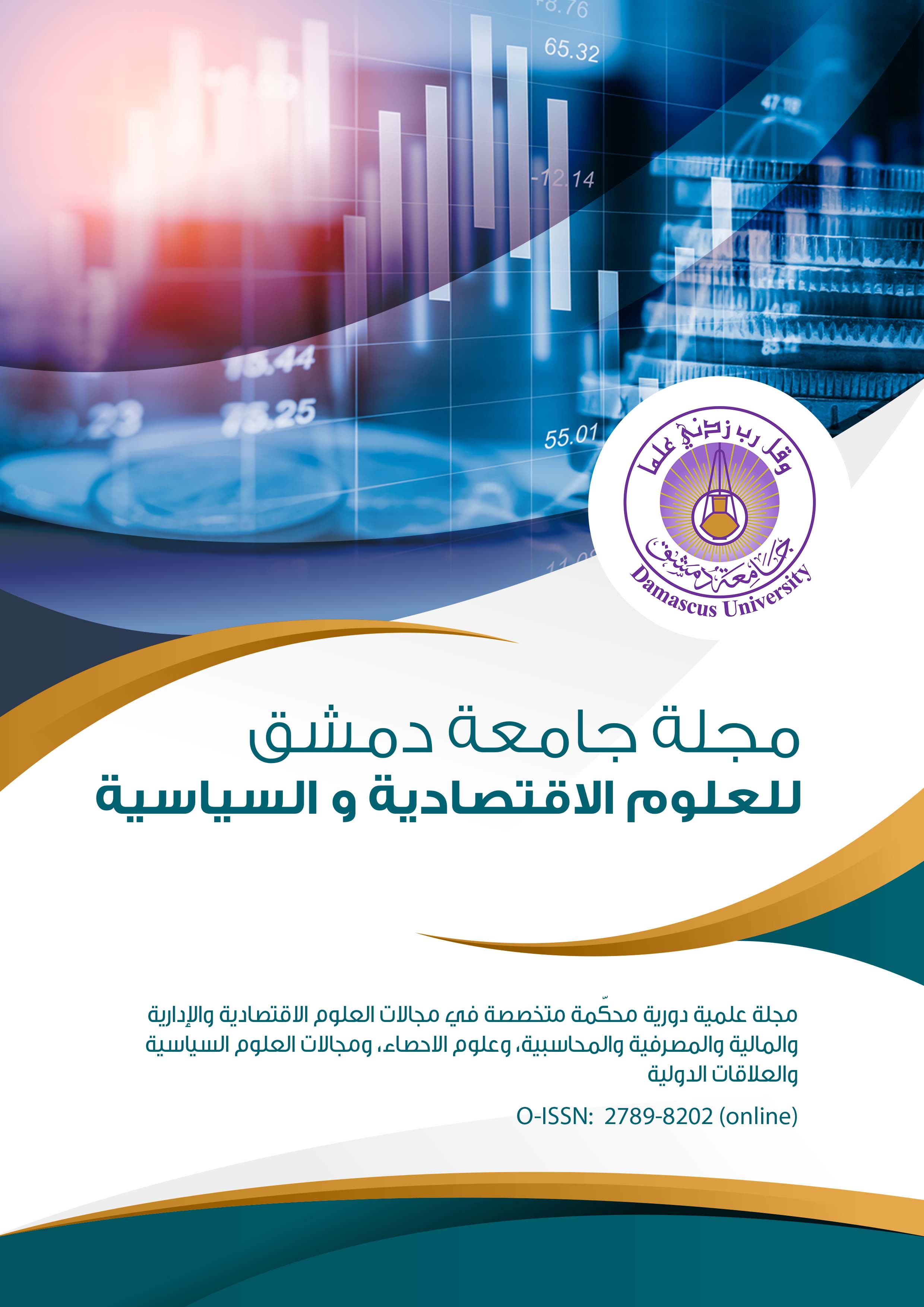الاستجابة غير المتماثلة بين التحيزات السلوكية وحجم التداول باستخدام نموذج ARDL غير الخطي "دراسة في سوق دمشق للأوراق المالية"
الكلمات المفتاحية:
حجم التداول، سلوك القطيع، تحيز الغموض، تقلب عائد السوق، NARDLالملخص
تناولت الدراسة ديناميكية العلاقة بين حجم التداول والتحيزات السلوكية في سوق دمشق للأوراق المالية بالإضافة إلى إدخال متغير تقلب عائد السوق لدراسة أثره على حجم التداول في المدى الطويل والقصير، وبهدف قياس التحيزات السلوكية تم استخدام المؤشرين سلوك القطيع وتحيز الغموض، من خلال تطبيق منهج الانحدار الذاتي للفجوات الزمنية الموزعة غير الخطي (NARDL)، لدراسة العلاقة غير الخطية الطويلة والقصيرة الأجل بين التحيزات السلوكية وتقلب عائد السوق وحجم التداول، حيث أظهرت النتائج أن حجم التداول والتحيزات السلوكية باستخدام المؤشرين سلوك القطيع وتحيز الغموض يتحركان في اتجاهين متعاكسين على المدى الطويل والقصير حيث تبين عند استخدام اختبار عدم التماثل Asymmetry أن سلوك القطيع يؤثر بشكل إيجابي على حجم التداول، وتحيز الغموض يؤثر بشكل سلبي على حجم التداول في المدى الطويل والقصير، بالمقابل تأثير تقلب عائد السوق على حجم التداول غير موجود على المدى الطويل، وعلى المدى القصير كان له تأثير إيجابي على حجم التداول.

